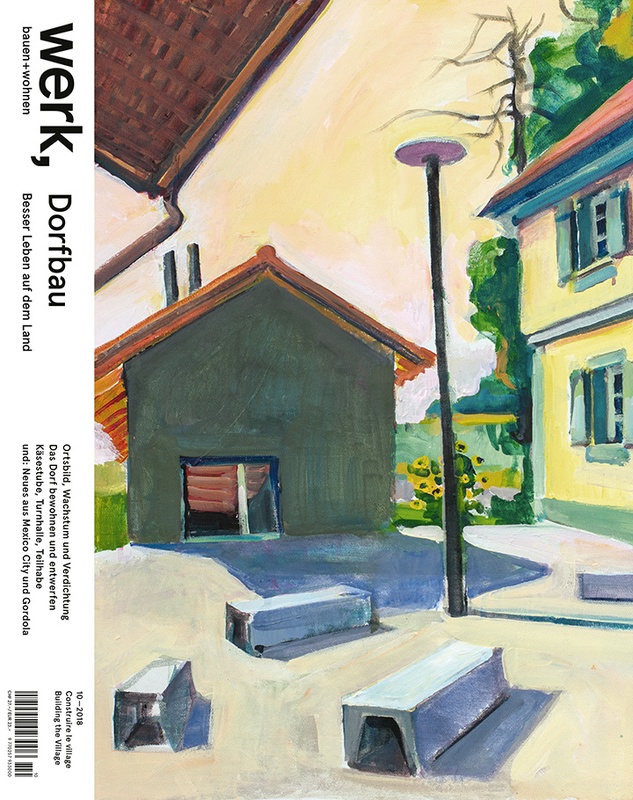werk, bauen + wohnen 10–2018

wbw among the folks
If you seat yourself in any PostBus and travel to the country, then it is not just your eyes that take the city with you: No matter how far you distance yourself from the urban centres everywhere investors architecture is to be found in the form of stolid apartment buildings with externally fitted insulation and large windows onto the rural backdrops. That the sociocultural urbanisation of the landscape is more than a fiction of the ETH Studio Basel (together with architect Marcel Meili sociologist Christian Schmid postulated this in the urban planning portrait of Switzerland 12 years ago) is shown by the ubiquitous scattering of agglomeration architecture throughout the countryside. The structural change (i.e. the inexorable shrinking) of the landscape, the availability of affordable building land, good roads and an excess of capital looking for an investment opportunity work together to gradually make commuter communities out of places once shaped by farming. Inevitably the new arrivals bring their mobile, urban way of life with them and all that remains of the village is its image. While this phenomenon is not new, through the continuing economic upswing it has become more visible.
Therefore the question about what constitutes “the village” in an era of globalisation becomes more pressing – with regard to urban planning but also in economic or cultural terms – as does the question about those conditions that make good building in the country possible: the kind of building that gives back to the village that which, as the hinterland of the city, it often willingly disposes of: self-confidence, appropriateness, pragmatism, quality, a relationship to the place and the people that live there. To achieve this efforts are needed on all levels, from the meeting room of the local council to the land use planning office to the workshop of the entrepreneur. It is only at this stage that architecture comes into play.
Despite such efforts villages in a peripheral situation outside the centres are still threatened by migration. Precisely on this account the community of Cressier attempted to bind young people to the place with new rental apartments. But a number of these still stand empty, like in the other examples shown here that we selected for their architectural value. In times of low interest rates the competition from the notion of home ownership is powerful, as is the draw of the larger centres with a more attractive infrastructure. – Tibor Joanelly, Daniel Kurz